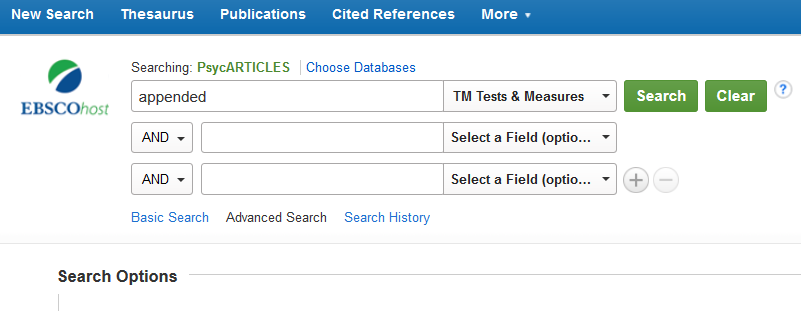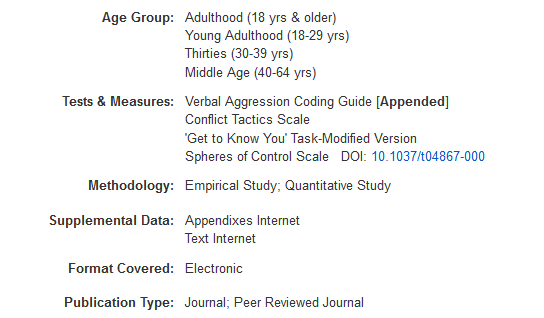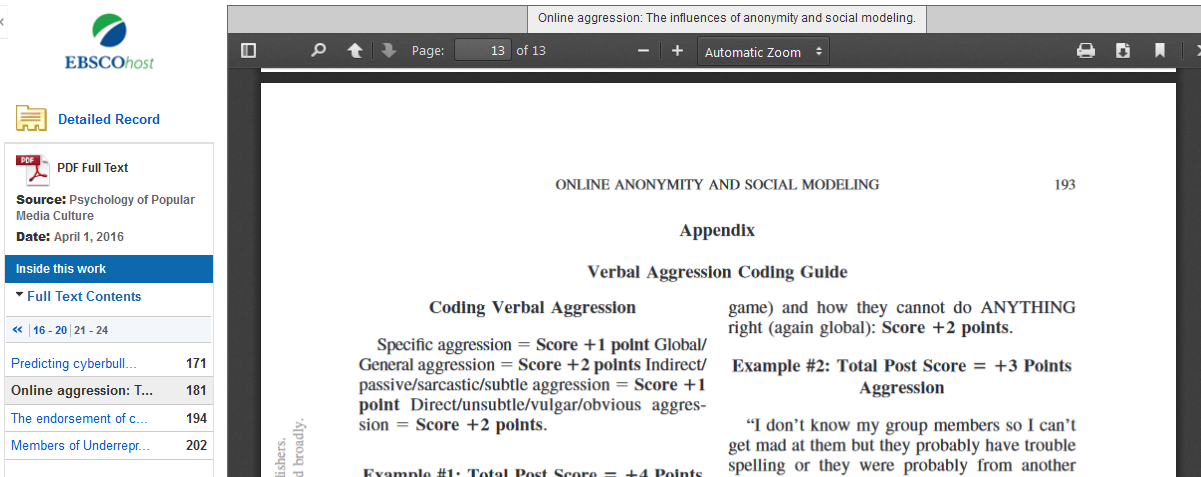Welcome to “From the Deck of . . .” an irregular series in which we highlight search demos and other information from the slide decks we create for our live training sessions. You can view and download these materials from our SlideShare account.
We recently hosted a training session at Mosaic ’16, the joint conference of the Medical Library Association, the Canadian Health Libraries Association, and the International Clinical Librarian Conference.
One of the items we covered in this session was the Tests & Measures field. We started off by describing the field and the information it includes – the topic of a post on this blog a little over a month ago. Then, we did a sample search in PsycARTICLES®, our database of full-text articles from APA-published journals.
During the Sunrise Seminar, we presented this search demo on the ProQuest platform. But since we used a ProQuest example when we shared a search from our presentation at ALA Midwinter, for this purpose we’ve recreated it on EBSCOhost.
In this search example, we need to find some tests, or test items, that have to do with behavioral issues. We’ll start by searching the Tests & Measures field for the word “appended,” so we can find articles that have a test, or items from the test, included in the full-text.

Searching the Tests and Measures field of PsycARTICLES, via EBSCOhost, for the word “appended.” Note that the Search Options area, which we’ll use in the next step, is just below the search boxes.
We want to keep the search fairly broad otherwise. So, rather than using a Subject Heading or a Keyword, we’ll use a Classification Code.
Classification Codes are descriptive phrases that categorize items in APA databases, such as journal articles, by their main theme. The record for an article will be tagged with one, sometimes two, Classification Codes. They can help you target your search to a particular “bucket” of content within the database. They’re a great way to help get more relevant results when you’re searching on a term that can mean different things in different contexts, or in different subfields of psychology. They’re also useful when you want to search more broadly, as is the case today.
Classification Codes are a limiter in APA databases – this means that you choose from a set list. On EBSCOhost, you’ll find the list at the bottom of the “Search Options” area.

The Classification Codes on EBSCOhost. Here, I’ve selected 3230 – Behavior Disorders & Antisocial Behavior.
Note that you can only see four of the Classification Codes at once, and that they’re ordered by their four-digit codes. Because this can be difficult to browse, we’ve put the full list online. I recommend reviewing that list to identify the Classification Code you want to use, so you can find it more easily when building your search.
To view the Tests & Measures field and see what test has been appended to the article, simply click the title and scroll down.
The Verbal Aggression Coding Guide has been appended. If you’d like to look at the items from this measure, access the full text. Remember, we indicate that a test has been appended when:
- the full test is included as an appendix to the article, or
- items from the test have been excerpted into a table or figure, or
- items from the test are provided in a narrative form in the body of the article.
Our Sunrise Seminar included several other live search demos. Screenshots for all of them are available by downloading the slides.
- EBSCOhost: Using the Thesaurus
- APA Style CENTRAL® overview
- APA PsycNET®: PsycTHERAPY® overview
- Ovid and ProQuest: searching PsycINFO® for information on tests & measures
Related Resources
- Playlist of video tutorials: Searching PsycINFO’s Tests & Measures Field
- Video tutorial: In Search of: Exploring Classification Codes Across Platforms (See the video description for links to jump to the search example for your interface)
- Full list of PsycINFO Classification Codes


